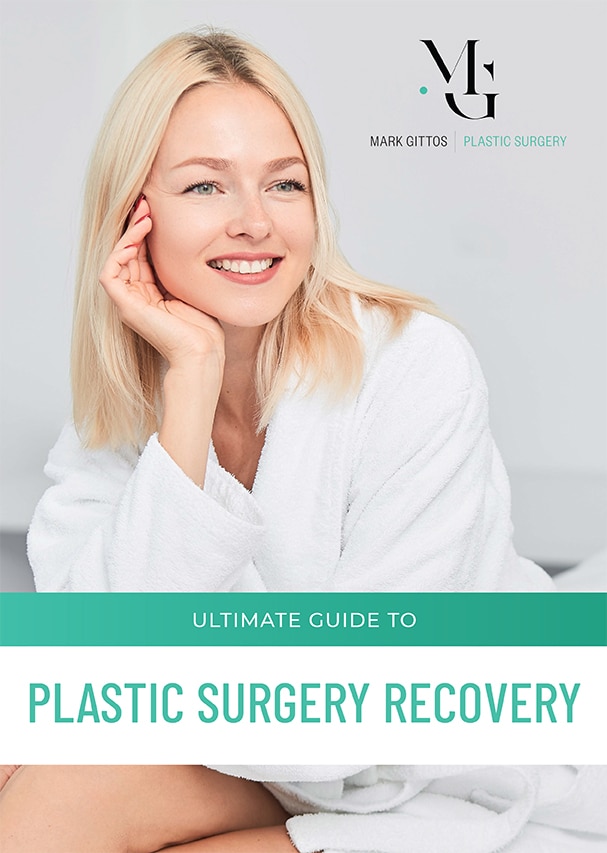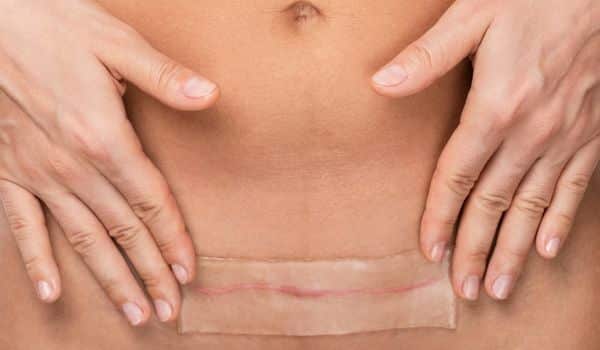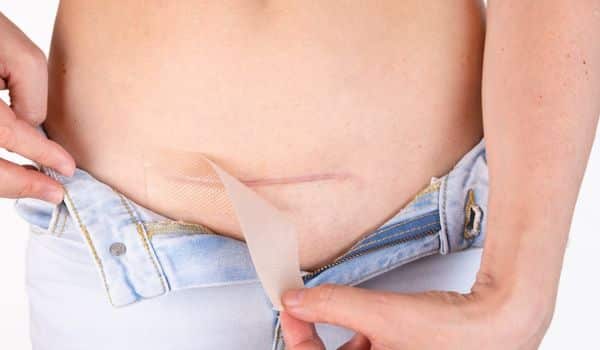Silicone Strips for Post-Operative Scar Treatment
Plastic surgery always leaves a mark – scar formation on the incision site is an inevitable consequence of the wound healing process after cosmetic surgery. Depending on the type of procedure, long or visible scars can develop. While most scars will fade and become less prominent after several months or a year, they never completely disappear. Over time, the scars on the surgical incision may also change shape or become sunken, which can affect the appearance of your skin as well as your self-esteem. Your scar results may be related to genetics, surgeon’s skills, aftercare and your effort to comply to recovery guidelines. Using Silicone Strips may help get less visible scars.
Non-invasive cosmetic solutions such as Silicon Strips, LED, Dermapen, Laser treatments can help improve the appearance of your surgical scars. This is especially useful for procedures with longer scars such as a tummy tuck surgery or body lift surgery. In this blog, you can learn more about the safety and efficacy of silicone strips in the treatment of the different types of scars.
Dr Mark Gittos is a body contouring and breast surgery expert and Plastic Surgeon in New Zealand who has helped hundreds of patients achieve their aesthetic goals.
Download Dr Mark Gittos’ Guide to Plastic Surgery Recovery

What Are Silicone Strips?
Silicone strips are ultra-thin sheets of silicone that are applied to scars. It’s an over-the-counter treatment for different types of scars. You’ll need to wear it 24 hours per day in order to achieve your desired aesthetic goals.
Silicone Strips – How Do they Works?
An overwhelming body of clinical evidence suggests that silicone strips can significantly improve the appearance of surgical scars through the following mechanisms:
Improves wound hydration and occlusion
- Silicone strips help prevent the stratum corneum, the outermost skin layer, from getting dehydrated. It retains water levels in the skin, thus providing adequate hydration to the newly formed, underdeveloped stratum corneum. In addition, silicone strips create a level of occlusion that is very similar to normal skin, which in turn reduces the activity of inflammatory cytokines and fibroblasts (cells involved in wound healing and scar formation).
Reduces wound tension
- Silicone strips transfer tension from the wound edges to the silicone sheet, which provides an ideal environment for normal scar formation because this mechanism reduces the risk of additional damage to the scar area.
Decreases blood flow to the scar site
- Silicone strips have been found to inhibit hyperaemia, the body’s natural reaction to skin injury which is characterised by increased blood flow to the site of damaged tissues. This in turn reduces blood supply to the scar site, resulting in decreased scar formation.
Contributes to the alignment of structural proteins
- Proper alignment of structural proteins during the wound healing phase is known to prevent the formation of raised scars. By creating friction between the sheet and the skin, silicone strips generate a negatively charged static electric field that aids in the proper alignment of structural proteins.
What Types of Scars Can Be Treated with Silicone Strips?

Specific scars on any part of the body can benefit from a silicone strip application. These include the following:
- Hypertrophic scars: these scars are thick, wide, and are usually raised or elevated
- Keloid scars: these are large, elevated scars that can be skin-colored, pinkish, reddish, or darker than the surrounding skin
Are Silicone Strips Safe for Scar Reduction?
Silicone strips are an FDA-approved treatment for different types of scars. In fact, clinical trials report that this non-invasive scar reduction treatment is safe and effective in improving the appearance of hypertrophic and keloid scars if worn over the affected skin area for 12-24 hours daily for at least 2-3 months. These products have a low risk of adverse events compared to more invasive scar reduction treatments like surgical excision, radiation, cryotherapy, laser treatment, and corticosteroid injection.
Are Silicone Strips An Effective Scar Treatment?
The efficacy of silicone strips in scar reduction is backed by recent studies. For instance, a 2016 study published in the Journal of Clinical and Aesthetic Dermatology found that the application of silicone strips in patients with hypertrophic and keloid scars for 1-16 months significantly improved the color, thickness, and elasticity of scars.
A 2016 study published in Advances in Skin and Wound Care reported that silicone strip application in patients with postoperative scars resulted in significant improvement in pigmentation, pliability, vascularity, length, and height of the scars compared with untreated patients.
While most studies on the safety and efficacy of silicone strips reported significant improvements in the appearance and structure of hypertrophic and keloid scars, it is important to keep in mind that the results of this non-invasive treatment will greatly depend on the extent and severity of your scar and your body’s healing ability.
Silicone Strips Advantages
Silicone strips have these advantages:
- Painless
- Non-invasive
- Lower risk of adverse effects
- Comes in different sizes
- Blends with the natural color of skin
- Readily available

Silicone Strips Disadvantages
Like any other non-invasive treatments, it also has disadvantages:
- Needs to be worn 12-24 hours a day
- Can be expensive
- Potential for hypersensitivity reaction
- Visible results can be observed after 2-3 months of continuous application
- Can cause discomfort if worn on the face or joint area
Undergoing a non-invasive scar reduction treatment such as silicone strips is an extremely personal decision. If you want to know more about the types of silicone strips that can work best for your surgical scars as well as aesthetic goals, schedule a consultation with Dr Mark Gittos now.
Read more about How to Get Rid of Man Boobs – Gynaecomastia surgery with Dr Mark Gittos.
Medical References for Silicon Strips:
- Effects of silicone gel sheet on the stratum corneum hydration
- Morphological analysis of the connective tissue reaction in linear hypertrophic scars treated with intralesional steroid or silicone-gel sheeting
- The relationship between keloid growth pattern and stretching tension-visual analysis using the finite element method
- Biological effects of silicone gel sheeting
- Topical Silicone Sheet Application in the Treatment of Hypertrophic Scars and Keloids
*Disclaimer: This information is general in nature and is not intended to be medical advice nor does it constitute a doctor-patient relationship. Surgery risks and complications will be covered in detail during a consultation with your Surgeon. Results depend on individual patient circumstances and can vary significantly. Results may be impacted by a variety of factors. Consult your Specialist Plastic for details.
About Dr Mark Gittos FRACS (Plast) – New Zealand Plastic Surgeon
Practice locations in Herne Bay Auckland, Northland and Bay of Plenty – Kerikeri, Whangarei, New Plymouth & Tauranga
Dr Mark Gittos is a leading Specialist Plastic Surgeon and operates a practice in Herne Bay, Auckland and in the UK. The practice focuses on both surgical and non-surgical procedures, each designed to help restore, improve or change a physical characteristic or problem. The first step in every case is to talk through your personal requirements and explore all the options, before deciding on the most effective solution.
Dr Mark Gittos offers high quality, natural-looking cosmetic surgery results and is highly experienced in Breast, Body and Face Surgery having performed over 4000 Surgeries in the last 26 years. With worldwide expertise Dr Gittos is an expert in breast, face and body surgery for men & women.
Naturally, before any treatment is begun, we will explain clearly the advantages and risk factors; so that you have the information you need to make an informed decision that is best for you. Visit the practice to find out more.

NEXT STEPS
Please NOTE: Dr Gittos only performs surgery on non-smoker patients with a BMI less than 30. To check your BMI please visit the NZ Heart Foundation website. For help giving up smoking before surgery visit the Smoke Free website
Do your Research
- Read the Website and Blogs relevant to your procedure
- Browse our Frequently Asked Questions including how to choose a Surgeon for your procedure
- Download and read the FREE Guides to Surgery
What to Bring to your Plastic Surgeon Consultation
- Bring a friend or relative to help discuss the information and your choices
- Take lots of notes and read the documents provided thoroughly
- Dress in simple clothes as you may need to undress for examination
- Bring your medical referral and any relevant medical documents or test results
Book your Initial Surgery Consultation
- A Referral from your GP or specialist is helpful but NOT essential – you can have a consultation without a GP Referral
- Email us or Call on 09 529 5352 to arrange your surgeon consultation appointment.
- Book a consultation with Dr Gittos by paying the Consultation Fee – $350 incl GST
Traveling for Surgery? – Consider post-surgery luxury recovery in a Hotel with LuxeCare
Please contact us to arrange to book a consultation with our Specialist Plastic Surgeon or to speak with our Patient Care Advisor.
Send an enquiry form today or phone 09 529 5352 during Clinic Hours
